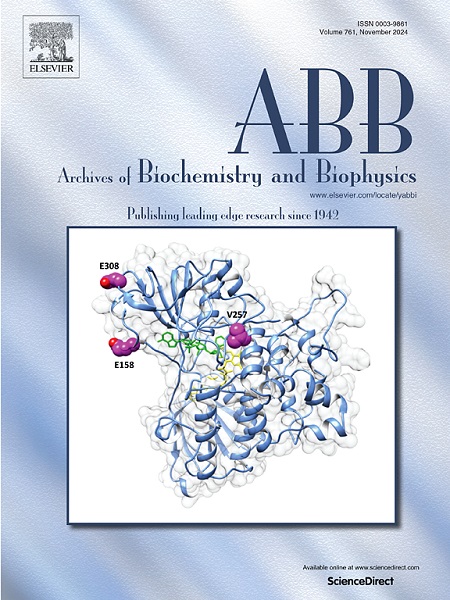Design, synthesis, and inhibition of α-glucosidase by novel l-phenylalanine-derived hydrazones: Kinetic, molecular docking, and dynamics studies
IF 3.8
3区 生物学
Q2 BIOCHEMISTRY & MOLECULAR BIOLOGY
引用次数: 0
Abstract
In this paper, a series of novel hydrazones derived from L-phenyl alanine were synthesized in four steps and employed to inhibit α-glucosidase through kinetic studies, molecular docking, and molecular dynamics analyses. Among the synthesized compounds, 8, 15, and 16 exhibited the strongest inhibitory effects, with IC50 values of 31.08 μM, 24.15 μM, and 19.47 μM, respectively, surpassing the standard inhibitor acarbose (79.63 μM). Molecular docking studies revealed robust interactions, with compound 16 achieving the highest MolDock score of −176.316. Molecular dynamics simulations were conducted to evaluate the binding affinity of compound 16 to the isomaltase enzyme from Saccharomyces cerevisiae (3A4A). The most favorable docking pose was subjected to further analysis through MD simulations under dynamic conditions. The MMGBSA analysis of the simulation cluster indicated a strong binding affinity of approximately −43.06 kcal/mol, highlighting the compound's potential for modulating α-glucosidase activity. These results underscore the potential of bromine and hydroxyl-substituted hydrazones to modulate isomaltase activity, with therapeutic implications for hyperglycemia and obesity management.

求助全文
约1分钟内获得全文
求助全文
来源期刊

Archives of biochemistry and biophysics
生物-生化与分子生物学
CiteScore
7.40
自引率
0.00%
发文量
245
审稿时长
26 days
期刊介绍:
Archives of Biochemistry and Biophysics publishes quality original articles and reviews in the developing areas of biochemistry and biophysics.
Research Areas Include:
• Enzyme and protein structure, function, regulation. Folding, turnover, and post-translational processing
• Biological oxidations, free radical reactions, redox signaling, oxygenases, P450 reactions
• Signal transduction, receptors, membrane transport, intracellular signals. Cellular and integrated metabolism.
 求助内容:
求助内容: 应助结果提醒方式:
应助结果提醒方式:


